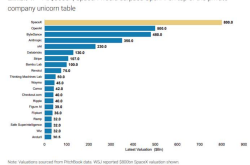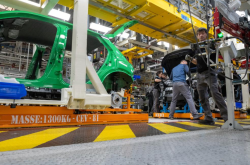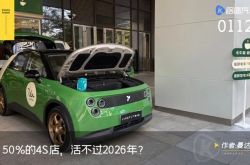2025 AI Main Battleground: The 'Transformation' of Chain Stores
![]() 07/24 2025
07/24 2025
![]() 478
478
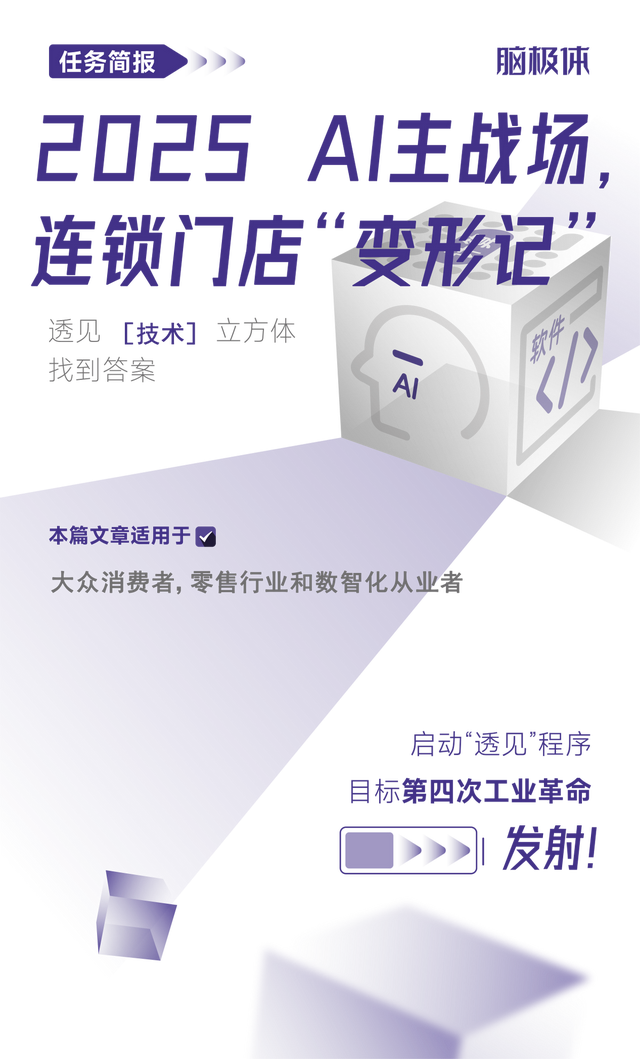
The two historical waves of AI have underscored a harsh truth: AI that fails to be implemented holds no future.
Since the advent of large AI models, high-tech sectors such as finance, internet, and healthcare have emerged as hotspots for AI adoption, characterized by abundant data, ample funding, high informatization levels, and strong willingness and capacity to invest.
However, the tide has subtly shifted.
By 2025, chain stores have emerged as the primary battlefield for AI.
In Western fast-food chains, McDonald's and KFC have ignited an AI rivalry. KFC introduced 'Drive-Thru 2.0' for seamless pickups, while McDonald's launched the conversational 'P.AI' to offer a touch of AI surprise to in-store patrons.
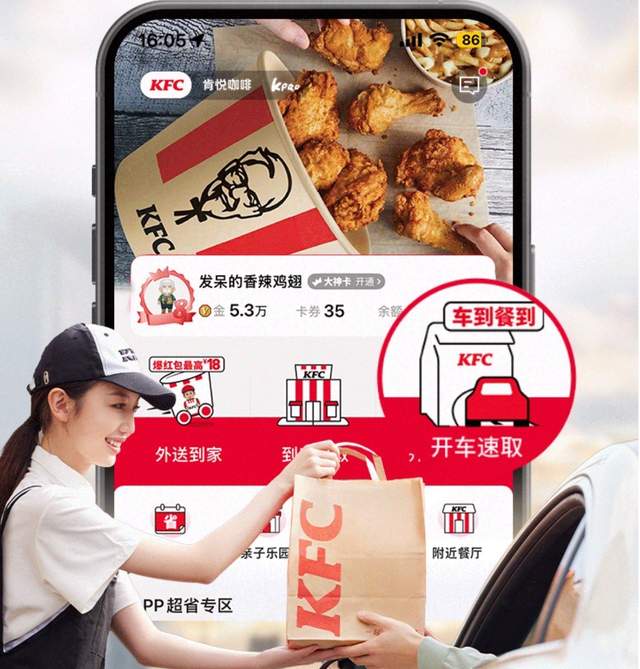
In Chinese spicy meat chain stores, Juewei Duck Neck unveiled three intelligent agents on its 20th anniversary, bringing AI to both store managers and customers.
The fiercely competitive fresh beverage market is also rushing to upgrade. Luckin Coffee's AI agent is integrated with the Doubao large model, while Mixue Bingcheng and Chabadao have collaborated with third-party digital service providers to introduce smart POS and marketing tools. Starbucks has also launched the generative AI assistant 'Green Dot Assistant' based on the OpenAI platform in its North American stores.
In other words, whether you're casually buying a hamburger, ordering a cup of bubble tea, or packing some snacks to take home, AI is now intricately involved in these activities.
Many ponder: Previously, AI was seen as belonging in the offices of tech companies or financial institutions, aiding programmers in writing code and fund managers in analyzing market trends. How did it suddenly dive into chain stores, busying itself with preparing chicken, duck, and shaking bubble tea?
Chain stores have become the liveliest main battleground for AI implementation this year. What underlying industry trends lie behind this shift?

Since AI must be implemented and technology should be business-driven, it's essential to delve into the retail business chain to understand how AI integrates with stores.
For chain retail enterprises, the business chain of research, production, supply, sales, and service is clear. Product SKU research and development, along with production, are handled by the headquarters. Individual stores, as the end of the supply chain, undertake tasks such as sales and service. So, what practical contributions can AI make in chain stores?
In the production stage, for chain stores in catering, beverages, snacks, etc., food safety is paramount. With numerous franchise stores, how can product quality be strictly controlled? AI can help identify issues here. Some chain bubble tea stores use service providers' 'AI Butler System', which employs visual large models to monitor operation stations, enabling AI to check in real-time whether raw materials are placed correctly, countertops are clean, reducing food safety issues by 60% and takeout packaging errors by 50%.

In the sales stage, retail SKUs range from tens to thousands. Without a clear understanding of customer preferences, either excess inventory will be created due to overstocking, or out-of-stock situations will lead to unsatisfied customers. Here, AI can become a thoughtful shopping guide for stores. For example, Juewei Duck Neck's AI ordering agent 'Xiaohuo Duck' accurately recommends personalized meal plans, suggesting slightly spicy dishes to relieve greasiness on rainy days and spicy ones for late-night snacks, significantly increasing the nightly repurchase rate. Haidilao's bakery brand 'Shishua SCHWASUA', launched in 2025, follows AI instructions for dough. Through algorithm analysis of customer preferences, it adjusts the product line in real-time to ensure adequate supply of popular breads, with a single store reportedly selling over 200 popular items daily.
In the service stage, stores are the most direct channel for chain brands to reach consumers. Whether the service is thoughtful and smooth will directly affect consumers' perception of the brand, making this the stage with the most AI applications. For instance, KFC's upgraded 'Drive-Thru 2.0' in January 2025 connects to Gaode Maps' ETA interface, automatically recommending passing stores and preparing meals in advance for 'pick-up upon arrival', eliminating the need to stare at the pick-up window from inside the car. McDonald's allows 'P.AI' to chat and answer questions with customers, with the chance to win discounts. As for 'service excellence student' Haidilao, it naturally doesn't miss out on AI. Its intelligent waiting system calculates waiting times based on historical data and provides personalized suggestions. Starbucks' 'Green Dot Assistant' is a time management master in the coffee industry, intelligently arranging orders in the background and reducing waiting times from 6 minutes to 4 minutes.
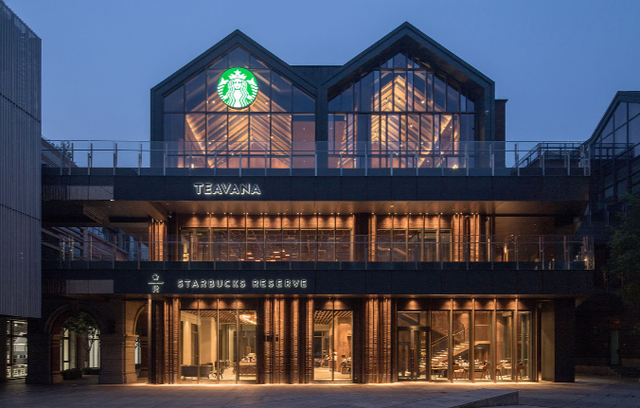
When you walk into a store and suddenly realize, 'Hey, this snack is exactly what I want to eat' or 'I just want to drink a matcha latte', that's AI quietly at work.
Chain stores are closest to consumers. This wave of store intelligence is shifting the main battleground for AI implementation from high-end CBD offices to consumption scenarios on streets and alleys.
In the eyes of many consumers, physical retail stores have a low 'tech content', with mobile phone QR code payment being the most digital aspect. How did it become the main force of AI in the era of large models? When did physical retail get so close to AI?

Indeed, physical retail has long been a latecomer to digitization.
In the 'Guiding Opinions on Promoting the Development of the Retail Industry during the 12th Five-Year Plan Period' issued by the Ministry of Commerce in 2015, it was clearly proposed to carry out pilot projects for 'intelligent stores'. However, to establish intelligent stores, it's first necessary to address digitization shortcomings.
This is because the smart retail that emerged around 2016 was essentially a defensive measure for the physical retail industry, eliminating barriers between online and offline, connecting full-process data, and introducing algorithmic intelligent decision-making in certain links. At that time, the main challenges faced by offline stores were low earnings and high expenses. The impact of online business led to a decline in customer flow, member data was scattered across different systems, and product selection, marketing, store replenishment, and inventory management all relied on experience and judgment.

Therefore, smart retail at this stage was essentially focused on 'cloud-based digital transformation', with only small-scale models and sporadic attempts at intelligence, far from forming a trend. After all, without connected data, how could one talk about 'intelligence'?
So, why has this former latecomer to digitization suddenly become the main force for technology implementation in the era of AI large models? Why do chain stores stand out on the AI track?
Behind this shift lies both helplessness and a badge of honor.
Why helplessness? Because the survival pressure on chain stores has increased. The enthusiasm for AI is essentially driven by the survival instinct to 'survive and thrive'.
Today, consumers' shopping habits and spending power have undergone significant changes, with offline store traffic continuously being diverted and sales per square meter (SPS) still declining. The entire industry has long entered an era of low profits, making more lean store management imperative.
At the same time, the franchise thresholds for chain stores such as tea drinks and snacks are relatively low, and many novice franchisees lack experience. The headquarters cannot keep up with operational guidance, easily leading to high closure rates. As the scale expands, management cannot keep pace, affecting consumer experience. Coupled with public opinion amplification, this directly impacts brand image and subsequent operations. The supply chain is also a weakness for chain brands, especially for fresh produce. Once the data chain is broken in intermediate links, food safety and freshness become issues.

Additionally, competition in physical retail is particularly fierce. Taking leisure snacks as an example, there are basically no monopoly brands, and continuously emerging new brands will continue to divert users. At this juncture, if chain brands want to retain consumers through brand loyalty, they must rely on continuous product freshness. However, a huge number of SKUs means that new products must be introduced every year and constantly appeal to the hearts of new generations of consumers; otherwise, consumers will switch to other brands.
Therefore, at this time, AI large models can help enterprises reduce costs, improve quality, and increase efficiency across the business chain of research, production, supply, sales, and service. Those who embrace large models first and utilize AI well will survive and thrive in the 'low-profit era'. So, it's not difficult to understand why chain brands do not want to miss this wave of AI.
Why is it also a badge of honor? Because the ability to use AI is essentially due to the fact that chain brands have basically completed digitization, giving them confidence and ability, allowing them to be bold in their strategies.

AI's capabilities rely entirely on the data infrastructure accumulated over the years by chain brands. For chain brands, digital and intelligent transformation is not easy. It involves interest games between online and offline, the transformation of thousands or even tens of thousands of stores, the interconnection of various systems in research, production, supply, sales, and service, and the establishment of member systems and user personas—all are challenging tasks. However, once these things are completed, high barriers are erected, allowing rapid access to AI large model capabilities.
Whether it's member systems, data mid-platforms, cloud-based SaaS, smart POS machines, smart cameras, etc., these data infrastructures consolidate the data necessary for AI. For example, Juewei Duck Neck's AI intelligent agent is based on big data from 94 million members to understand what customers want to eat and love to eat.
Moreover, the exploration in the previous stage has also enabled chain brands to cultivate a group of talents familiar with machine learning algorithms, cloud services, big data, etc., creating endogenous capabilities.
Besides these internal factors, the reason chain brands are leading the pack on the AI track also has an external factor: the reduction in the technical threshold for large models.
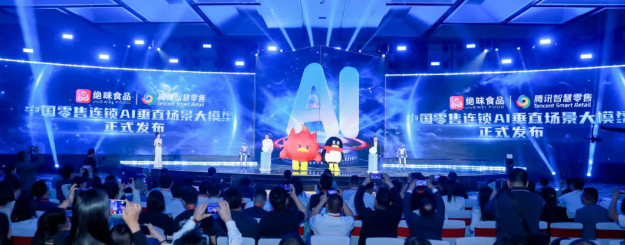
Previously, for physical retail to engage in AI, it had to hire algorithm engineers and purchase computing power cards, which was unthinkable for small and medium-sized stores. Now, cloud platforms' MaaS services, such as Baidu Retail Digital Humans and Tencent Smart Retail, provide AI modules and tools that are ready to use, significantly lowering the development threshold for enterprise AI applications. For example, Juewei Duck Neck's first vertical large model in the spicy meat industry, Juezhi, is trained based on the Hunyuan large model and Tencent Cloud. JD Cloud's Lingxi large model also relies on JD.com's retail genes for post-training, making it more suitable as a base model for retail scenarios.
Survival pressure, endogenous capabilities, and external assistance—these three forces have collided to create the wave of store intelligence.
The next question is, when AI users shift from technology company engineers to fast-food store employees and duck neck store managers, how does this transformation, in turn, put forward new 'down-to-earth' requirements for AI technology?

In the wave of smart retail around 2016, stores became the main battleground for algorithm enterprises and cloud vendors. Leading machine vision vendors have launched recognition solutions and smart surveillance cameras for retail enterprises; cloud vendors have also introduced various smart retail solutions, such as Tencent Cloud's Smart Retail, China Telecom's Smart Surveillance, Kingsoft Cloud's New Retail Solution, and Huawei Cloud's Smart Store Solution.
In the era of AI large models, chain stores will also be the main battleground for AI and cloud enterprises. Why?
On the one hand, the digitization and standardization of chain stores provide fertile ground for the large-scale implementation of AI applications. The core competitiveness of chains lies in their replication ability. Thousands of stores are like the nerve endings of AI, generating massive data daily to help AI algorithms iterate and upgrade, which can then be quickly replicated to various stores.
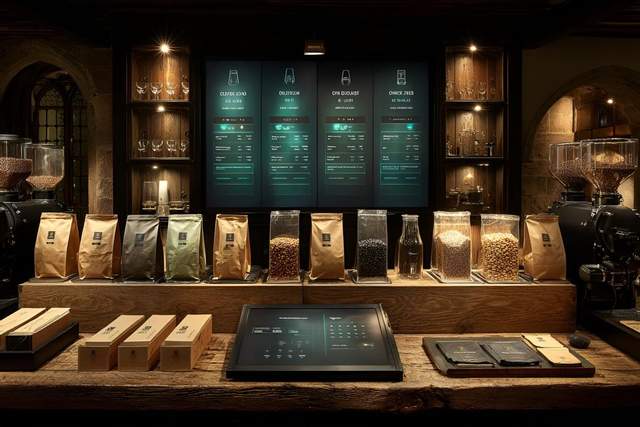
Additionally, chain stores are direct touchpoints with users, making them highly suitable for multimodal large models. Voice ordering, emotion recognition, AIGC painting interactions, etc., AI company products can also play various tricks in consumer scenarios.
In summary, AI technology in chain stores has great value, high output efficiency, and low average costs, so it will undoubtedly attract more chain brands to invest in it, bringing increments to the AI and cloud markets.
However, to reap the benefits of chain store intelligence, the key is to return to the business fundamentals.
A representative from a leading leisure snack chain brand candidly shared: "I'm less concerned with the cloud itself; my focus is on ease of use." To be blunt, AI must be business-driven, deeply understanding the nuances of the physical retail industry and effectively addressing its practical challenges. For instance, it's crucial to avoid fabricating data that disrupts inventory management in stores and to minimize the allure of overhyped large models.
Another pertinent example is the preference of retail stores for integrated solutions. These solutions span from computing infrastructure and data governance to model training and implementation support, exemplified by the end-to-end assistance offered by Tencent Smart Retail, powered by Tencent Cloud MaaS.
The shift in the primary AI battleground by 2025 underscores a critical point: AI must be business-led. When the value of large models is tangible, evidenced by faster hamburger pick-ups and seamless one-sentence coffee orders, this technological revolution can truly be deemed implemented.


